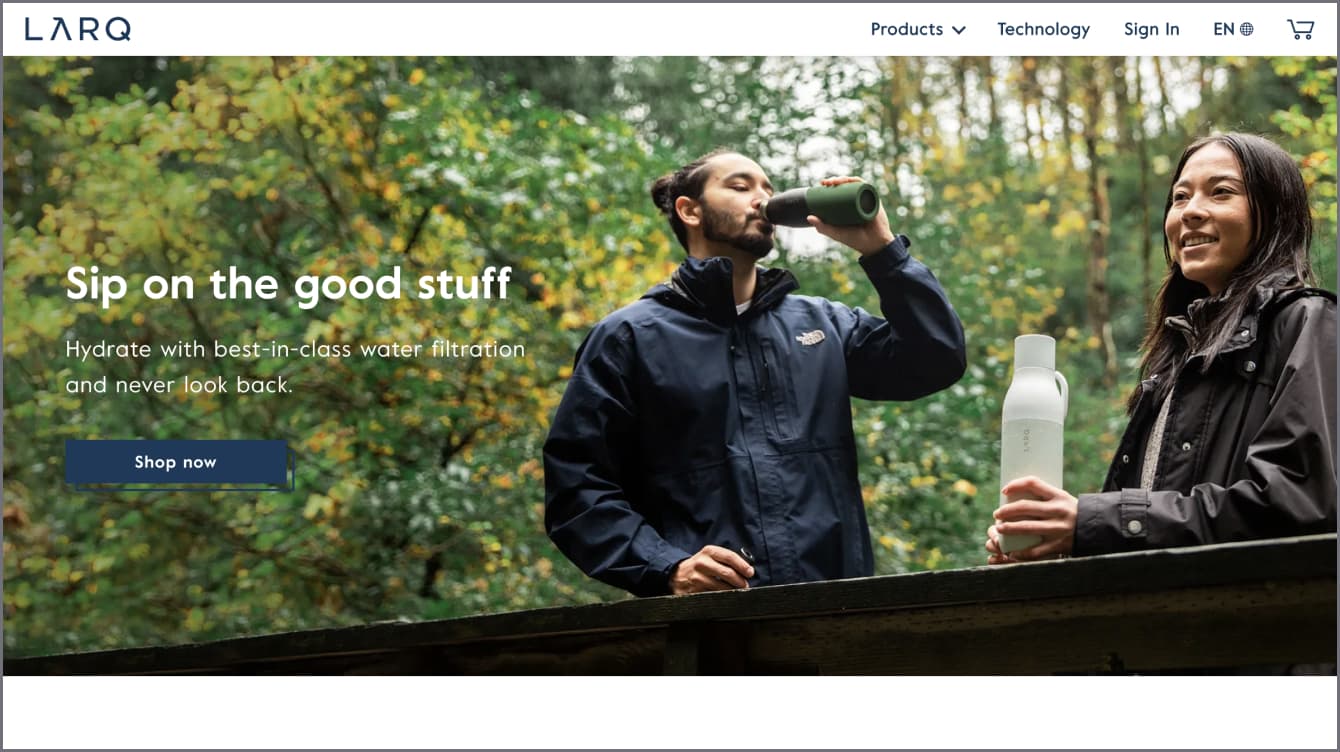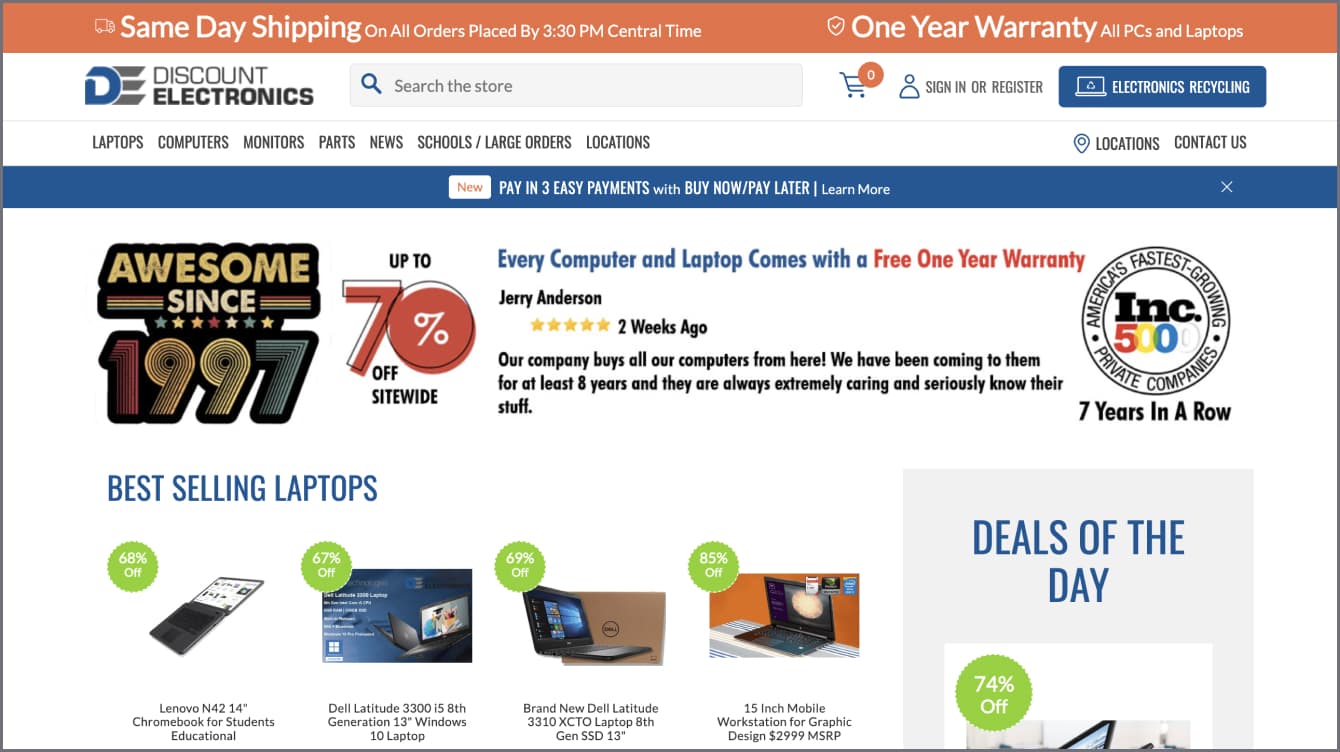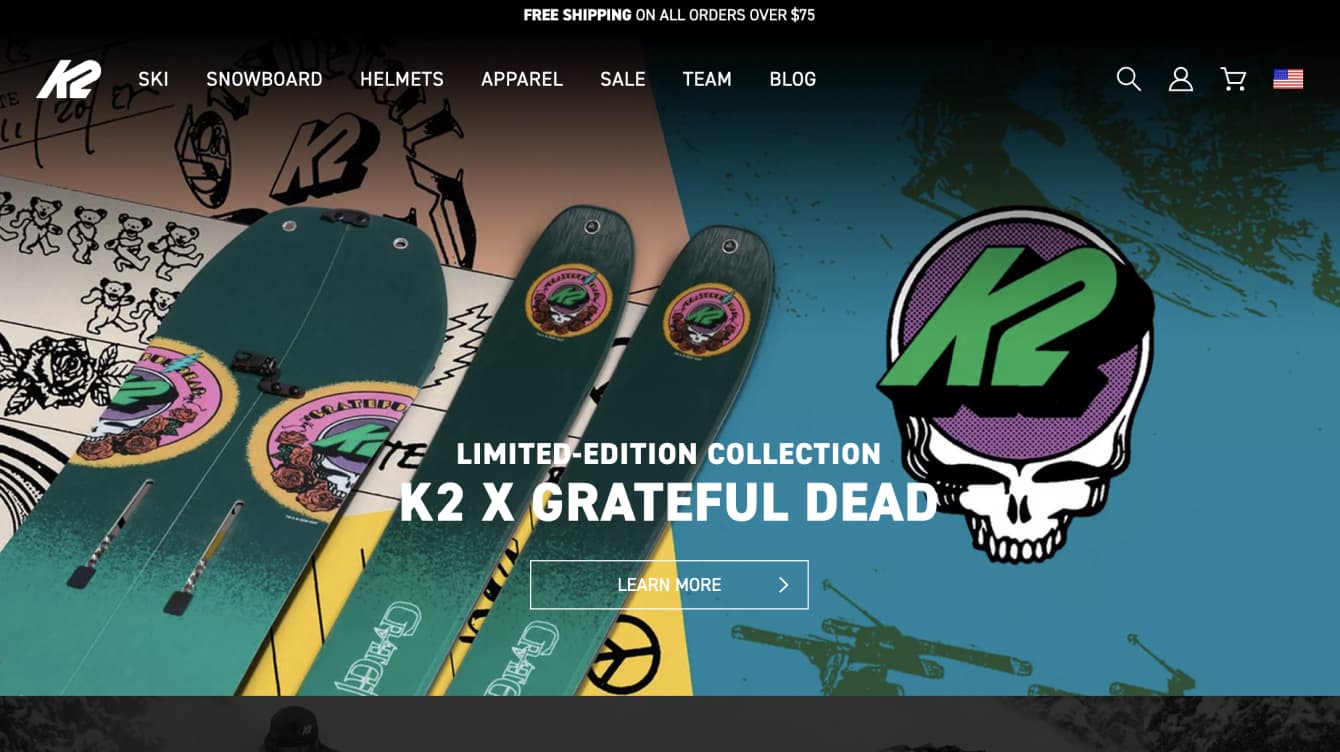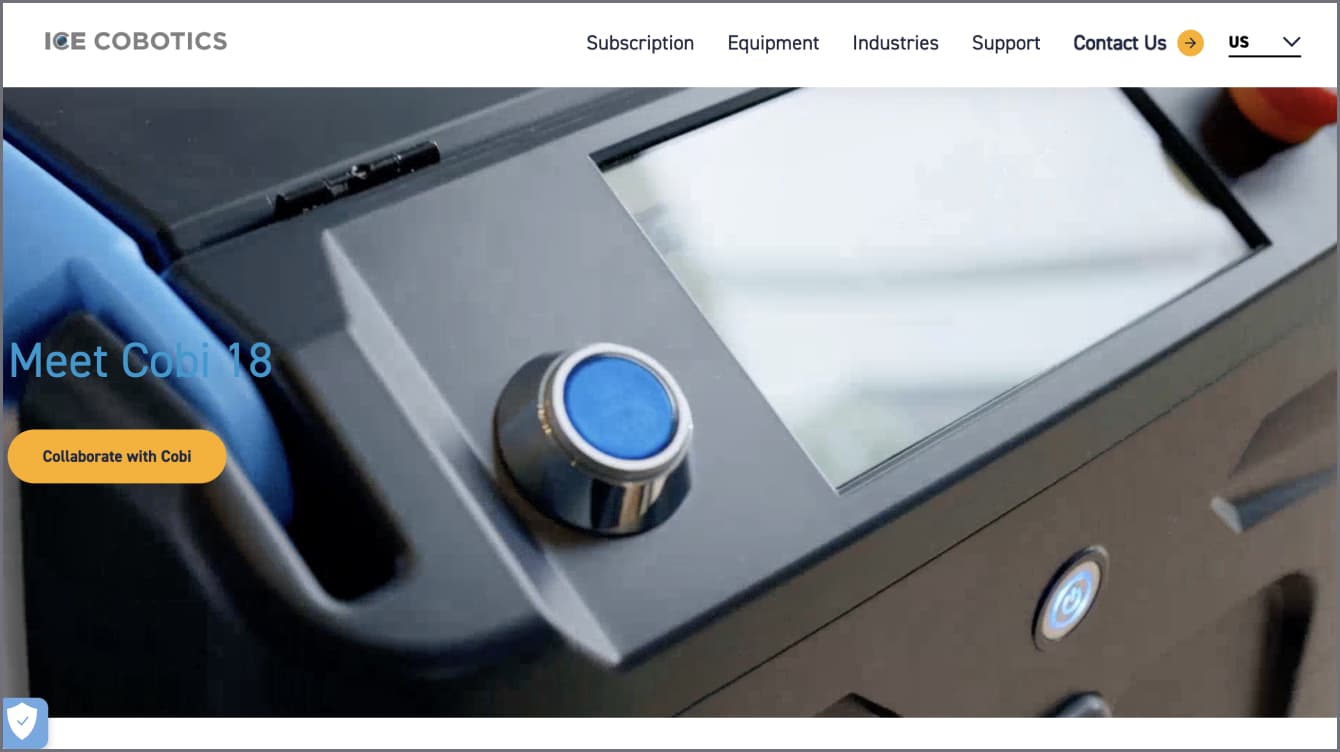8 Amazing Examples of Brands Going Headless with BigCommerce

Ecommerce brands have increasingly decoupled their technology stacks in order to more easily launch multi-storefronts and customize the user experience. By decoupling a tech stack, the front-end, or presentation layer, is severed from the back-end commerce engine.
This is also referred to as going headless. BigCommerce has been at the forefront of this change by releasing new features and capabilities to support brands seeking to go headless.
In this article, we review 8 ecommerce brands that rely on BigCommerce to power their headless architecture. We identify the problems they solve by going headless and why they selected BigCommerce as their commerce engine.
What is headless BigCommerce?
BigCommerce offers ecommerce brands a Stencil template for creating an online storefront. A page builder also lives in the admin area, allowing internal teams to easily build and redesign web pages. It also makes available an admin area to manage products, orders and shipping.
This approach to managing an ecommerce business, however, where various functions and features are tightly integrated, no longer satisfies the needs of many ecommerce brands.
In recent years, ecommerce brands have found that this traditional tech stack constrains their ability to create custom experiences and launch international storefronts, among several other limitations. A new technology stack was needed to support their business needs.
Enter MACH architecture. MACH stands for Microservices, API-first, Cloud-hosted, and Headless. This approach to assembling a tech stack relies on an Application Programming Interface (API) to stitch together various cloud-hosted microservices.
MACH architecture allows brands to take advantage of best-in-class software for each business function. They can now integrate a headless Content Management System (CMS) or Product Information Management (PIM) into their tech stack.
Brands can also use custom technologies to power their online storefront instead of BigCommerce’s Stencil template. A custom front-end, powered by Next.js or Gatsby, can request data from your best-in-class headless CMS rather than your ecommerce platform.
BigCommerce has released APIs and other features to support brands wanting to make the transition to headless. Brands can now access their product, order, and customer data via BigCommerce’s APIs to build custom front-end solutions.
If you want to learn more about going headless with BigCommerce, make sure to check out our comprehensive guide to headless BigCommerce.
Headless BigCommerce examples
Many ecommerce brands have selected BigCommerce to support their headless architecture. In this section, we discuss why these 8 brands went headless, why they chose BigCommerce, and how it impacted their businesses.
LARQ

LARQ is an ecommerce brand that sells self-purifying water bottles and pitchers. Launched in 2018, their products attempt to eliminate the problem of finding filtered, clean water. Headquartered in California, LARQ is an environmentally-conscious brand that is focused on promoting sustainability and clean water initiatives.
As LARQ’s revenues grew quickly after their initial launch, their executive team sought to evolve their tech stack to support multiple online storefronts. They sought to create a global presence by launching international storefronts.
They decided to go headless as it would allow them to better control their international sites as they could manage it with a single instance of BigCommerce’s commerce layer. LARQ launched a new front-end powered by Next.js with a BigCommerce back-end in about 2 months.
They saw a 400% increase in revenue year-over-year and an 80% increase in conversion rates. As a result of going headless, they now have a global presence powered by BigCommerce.
SkullCandy

SkullCandy is a lifestyle brand that sells ear and head phones. Headquartered in Utah, Rick Allen, the founder and CEO, initially started the company for active people who wanted to listen to music but also wanted to switch over to pick up a call.
The initial launch of their first product created immediate success and the company soon found itself with scaling issues as their existing ecommerce platform, Salesforce Commerce Cloud, was expensive to manage and maintain. They also needed to host several international storefronts, which would have been cumbersome to host on Salesforce.
They decided to go headless instead as it would give them the opportunity to customize their front-ends across multiple storefronts. They also decided that a SaaS ecommerce platform would allow them to devote less resources to maintaining their commerce back-end.
SkullCandy considered both Shopify and BigCommerce, but ultimately went with the latter given the better pricing and customer support. They also selected Yotpo for product reviews and Klayvio to support their email marketing strategy.
Collaborating with ZaneRay, a web design and development agency, SkullCandy was able to launch seven international storefronts in three languages and four currencies in six months. Since they launched their sites, SkullCandy has seen 104% increase in site traffic, 146% increase in revenue, and 50% increase in conversion rates.
Yeti Cycles

Yeti Cycles is a sports brand based in Golden, Colorado and sells premium mountain bikes. The brand is known for its Switch Infinity suspension platform which results in an incredible bike riding experience.
Yeti Cycles’ tech stack was originally a hodgepodge of different systems that were stitched together. They relied on Shopify, Magento 1, and Readymag but these different systems were not working well together. Their storefront was limited in capabilities, unable to merchandise and cross-sell products.
The marketing team, as a result, found it difficult to launch new products. Their complicated tech stack required a lot of custom code and integrations to make everything work. And any additional updates would require development work, preventing their internal teams from making site updates.
Yeti Cycles looked into Shopify, Magento 2, and Salesforce Commerce Cloud, but settled on BigCommerce as their pricing was lower. They were also impressed with the BigCommerce’s API coverage, as they could access most of their product catalog via their APIs. This would allow them to customize their front-end and create the customer experiences they thought were important to converting shoppers on their site.
With the help of ZaneRay, Yeti Cycles built a new headless storefront using Nuxt.js, a Javascript front-end framework. This technology allowed them to build an immersive, highly engaging branded experience. They also integrated Prismic, a headless CMS, which would allow their content and marketing teams to update products without developer support.
The new headless storefront has been a huge success for Yeti Cycles. They have been able to launch new products within days rather than what would have normally taken them much longer. One of the first products they launched after the new storefront was the ARC 35th Anniversary model, which sold out in 2 hours and generated 85.5 thousand page views and more than 38 thousand sessions.
Burrow

Burrow was founded by two college students who believed there was an easier way to buy furniture online. The furniture brand makes it easy to purchase high-quality furniture and have it quickly delivered to you.
They launched their company in 2017 with immediate success. But with that success came the problems of scaling as they needed to create custom experiences on their product detail page. They struggled to create these experiences on their website template without involving developers at every stage.
They decided that a headless approach would give them the flexibility to create the custom experiences they were looking for. They adopted a React-powered front-end to deliver amazingly fast customer experiences and integrated a headless CMS to give their teams full control over page content and product launches.
The launch of their new storefront has been incredibly successful. Burrow has seen a 30% increase in conversion rates 2 months after the launch and a 50% increase in page speed and overall site performance.
Discount Electronics

Discount Electronics is a computer hardware retailer with multiple locations in Texas. They specialize in selling used computers, laptops, and monitors. The brand had been an existing BigCommerce customer for years but decided to change their tech stack to improve performance and customize their front-end.
The brand partnered with oBundle, a BigCommerce agency partner, to help them with designing and developing their new storefront. oBundle implemented a Shogun-powered front-end and sync it with their BigCommerce back-end.
Shogun is a Frontend as a Service (FaaS) solution that abstracts away the complexity of hosting and maintaining a custom front-end solution. Shogun Frontend gives your internal teams more control over content updates and new product launches. With a page builder, your teams can easily create new experiences without needing to depend on developer support.
The launch of Discount Electronc’s new Shogun-powered front-end has been a huge success. Just months after launch, they saw a 40.6% increase in conversion rates and a 36.5% increase in revenue per user.
Elevate Outdoor Collective

Elevate Outdoor Collective, formerly known as K2 Sports, is a collection of sporting goods brands that sells products as varied as skis and snowboards to backcountry safety equipment. The company’s former platform, Salesforce Commerce Cloud, presented several challenges that prevented them from scaling their brands.
Their implementation of Salesforce was self-hosting, so they had to spend resources on upgrades and maintenance, which negatively impacted their ability to create international storefronts. They also struggled to create innovative, content-based experiences for their customers due to the lack of extensive APIs.
They decided to decouple their tech stack as that would allow them to select best-in-class solutions to address their scalability issues. They selected BigCommerce, for example, due to its affordability and robust APIs. They also integrated Contentstack, a headless CMS, into their tech stack in order to give their content and marketing teams autonomy over content creation. They powered their front-end with Nuxt.js, JavaScript front-end framework.
After replatforming with BigCommerce and Contentstack and launching over 8 sites, they have seen a massive increase in productivity. Their internal teams have increased their productivity by 50% and have published new content 90% faster.
ICE Cobotics

ICE Cobotics is a subscription-based brand that sells cleaning solutions technology and equipment. They were formally on a WordPress site but sought to modernize their tech stack to take advantage of best-in-class software solutions.
Collaborating with oBundle, the web design and development agency, they implemented a BigCommerce back-end along with a Shogun-powered front end. The pairing allowed them to take advantage of BigCommerce’s extensive API’s along with Shogun’s easy-to-use page builder to create powerful front-end experiences for their customers.
After taking their front-end headless, they saw a 13.5% increase in sessions and 113.1% increase in page views.
Black Diamond

Black Diamond is an outdoor sports brand that sells innovative mountain equipment. They were formally on a monolithic, tightly coupled tech stack, which presented them with several problems as they grew in scale.
Their internal content and marketing teams struggled with creating innovative, custom experiences without the additional need for developer support. Black Diamond also wanted to create an international storefront but found it difficult to do on a monolithic tech stack.
The sports brand ultimately chose BigCommerce to support their headless architecture due to their wide-ranging API coverage and Prismic as their headless CMS. BigCommerce’s commerce engine would more easily facilitate the launching of additional storefront, while Primsic would allow Black Diamond’s internal teams to build innovative, branded experiences without having to rely on developers.
Prismic also supports presenting content in different languages, which would be essential to their plan to launch online storefronts across Europe. After the launch of their new storefronts, the content and marketing teams have been able to speed up their internal processes in order to launch more innovative content.
Wrap Up
Decoupling your tech stack and going headless allows your brand to more easily accomplish several initiatives: (1) customizing your front-end so it’s optimized for the customer experience, (2) launching multiple storefronts, and (3) streamlining internal processes for creating and publishing content.
Headless is also critical to launching omni-channel experiences and creating faster performing websites. BigCommerce is a market leader in the headless space with its extensive, robust APIs. As the brands covered in this article demonstrate, BigCommerce can help your brand grow and take advantage of the best technology.